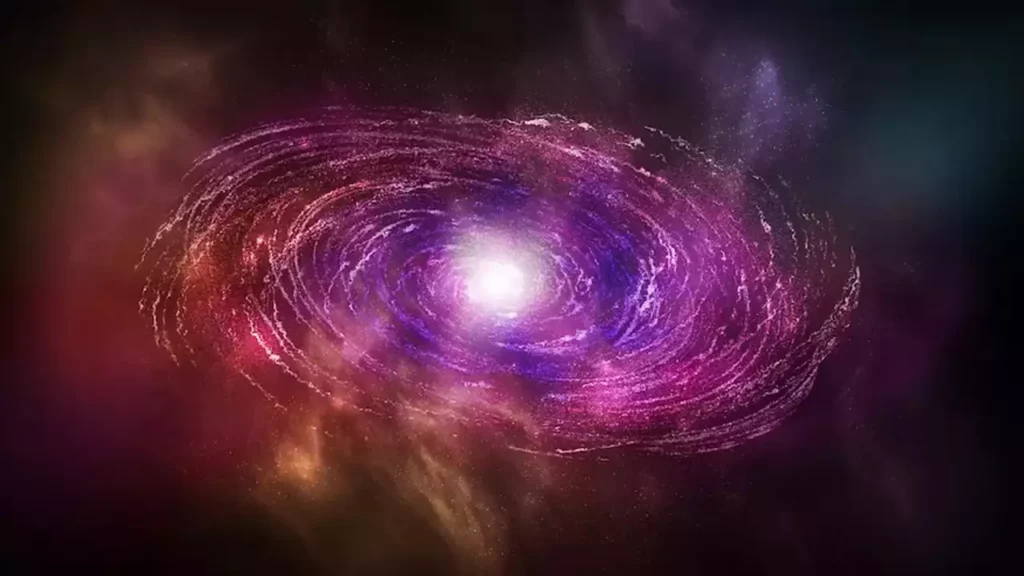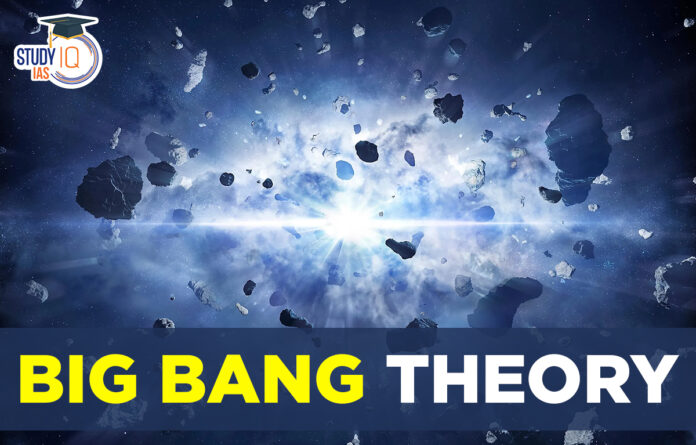Introduction
Welcome to an exploration of one of the most fascinating theories in the realm of science—the Big Bang Theory. In this article, we will dive deep into the origins of our universe, uncover the mysteries of its birth, and shed light on the incredible scientific discoveries that have shaped our understanding of the cosmos. Get ready for an exhilarating journey through time and space as we unravel the enigmatic Big Bang Theory!
The Big Bang Theory
The Big Bang Theory is a scientific explanation for the origins of the universe. According to this theory, the universe began as a singularity—a point of infinite density and temperature. Approximately 13.8 billion years ago, this singularity rapidly expanded, giving rise to space, time, and all matter and energy in the universe. The term “Big Bang” was coined by astronomer Fred Hoyle, who initially intended it as a derisive term but it eventually gained widespread acceptance.
The Origins of the Universe
What is the Big Bang Theory?
The Big Bang Theory proposes that the universe began as an incredibly hot and dense state, and has been expanding ever since. It suggests that all matter, energy, and even space and time originated from a single point, marking the birth of our cosmos.
Who Proposed the Big Bang Theory?
The groundwork for the Big Bang Theory was laid by the Belgian physicist and Catholic priest, Georges Lemaître, in the 1920s. Lemaître’s idea of an expanding universe was later supported by observational evidence, most notably the discovery of cosmic microwave background radiation.
How Does the Big Bang Theory Explain the Universe’s Origins?
According to the Big Bang Theory, the universe started with an event of immense energy and temperature. As space expanded, the universe cooled down, allowing particles to form, atoms to combine, and eventually leading to the formation of galaxies, stars, and all the celestial bodies we observe today.

The Expansion of Space and Time
How Did the Universe Begin to Expand?
The expansion of the universe began shortly after the Big Bang. Space itself started stretching, carrying galaxies and other cosmic structures away from each other. This expansion is still ongoing and is a fundamental feature of our universe.
What is Cosmic Inflation?
Cosmic inflation is a theory that suggests the universe underwent an exponential expansion in the first fraction of a second after the Big Bang. It explains some of the observed properties of the universe, such as its overall uniformity.
What Evidence Supports the Expansion of Space and Time?
The expansion of the universe is supported by various lines of evidence. One key piece of evidence is the redshift observed in the light emitted by distant galaxies, indicating that they are moving away from us. Additionally, the cosmic microwave background radiation provides further confirmation of the universe’s expansion.
Cosmic Microwave Background Radiation
What is Cosmic Microwave Background Radiation?
Cosmic Microwave Background Radiation (CMBR) is a faint glow of radiation that permeates the entire universe. It is the residual heat left over from the early stages of the universe when it transitioned from a hot, dense state to a cooler one.
How Does CMBR Support the Big Bang Theory?
CMBR is a crucial piece of evidence for the Big Bang Theory. It was predicted by the theory and later discovered by the COBE and WMAP missions. The uniformity and specific patterns observed in CMBR provide strong support for the idea that the universe underwent a rapid expansion.
What Did the COBE and WMAP Missions Reveal?
The COBE (Cosmic Background Explorer) and WMAP (Wilkinson Microwave Anisotropy Probe) missions made significant contributions to our understanding of the universe. They provided precise measurements of the cosmic microwave background radiation, revealing its temperature fluctuations and confirming key predictions of the Big Bang Theory.
The Formation of Galaxies and Stars
How Did Galaxies Form After the Big Bang?
After the Big Bang, the universe went through a phase of gravitational collapse and subsequent reformation. Dense regions of matter attracted more matter, eventually leading to the formation of galaxies. The force of gravity played a crucial role in shaping the large-scale structure of the universe.
What Role Did Dark Matter Play in Galaxy Formation?
Dark matter, a mysterious substance that does not emit or absorb light, played a crucial role in galaxy formation. It is believed to have provided the gravitational scaffolding necessary for the formation of galaxies by pulling ordinary matter together.
How Were Stars Born in the Early Universe?
Stars are born from the gravitational collapse of dense regions within galaxies. These regions, known as molecular clouds, contain gas and dust that gradually come together under their own gravity. As the density increases, the temperature rises, triggering nuclear fusion and giving birth to stars.
Nucleosynthesis: Forging the Elements
What is Nucleosynthesis?
Nucleosynthesis is the process by which heavier elements are formed from lighter elements. It occurs in the extreme conditions of high temperatures and pressures found within stars and during cosmic events like supernovae.
How Did Nucleosynthesis Shape the Universe?
Nucleosynthesis played a vital role in shaping the chemical composition of the universe. It produced elements like hydrogen and helium during the early stages of the universe, and the subsequent generations of stars contributed to the formation of heavier elements, such as carbon, oxygen, and iron.
Which Elements Were Formed During Nucleosynthesis?
During nucleosynthesis, the primary elements formed were hydrogen and helium, which account for the majority of the universe’s elemental composition. However, through stellar processes, heavier elements like carbon, oxygen, nitrogen, and iron were synthesized.
The Cosmic Web: Structure of the Universe
What is the Cosmic Web?
The cosmic web is the large-scale structure of the universe, consisting of interconnected filaments of galaxies, galaxy clusters, and vast cosmic voids. It is a result of the gravitational pull between matter and dark matter, forming a network-like structure.
How Did the Cosmic Web Evolve?
The cosmic web evolved through a process known as hierarchical structure formation. Small structures, like galaxies, formed first and later merged to form larger structures like galaxy clusters and superclusters. Gravity played a fundamental role in shaping this interconnected web.
What is Dark Energy’s Role in the Structure of the Universe?
Dark energy is a mysterious force that is believed to be responsible for the accelerated expansion of the universe. Its presence affects the dynamics of the cosmic web, counteracting gravity and causing galaxies to move away from each other at an accelerating rate.
The Fate of the Universe
Will the Universe Expand Forever?
Current observations suggest that the expansion of the universe will continue indefinitely. The amount of matter and energy in the universe, including dark matter and dark energy, will determine its ultimate fate.
What is the Big Freeze?
The Big Freeze is one possible scenario for the future of the universe. If the expansion continues, galaxies will move farther apart, stars will exhaust their fuel, and the universe will become increasingly cold and dark.
Could the Universe Experience a Big Crunch?
The Big Crunch is another potential fate for the universe. If there is enough matter in the universe, the gravitational pull may eventually overcome the expansion, causing the universe to collapse in on itself.
Frequently Asked Questions (FAQs)
- How do scientists study the Big Bang?Scientists study the Big Bang through a combination of observational data, theoretical models, and experiments. They analyze cosmic microwave background radiation, observe the distribution of galaxies, and conduct experiments to recreate early universe conditions.
- Are there alternative theories to the Big Bang?Yes, there are alternative theories to the Big Bang, such as the Steady State Theory and the Oscillating Universe Theory. However, the Big Bang Theory is currently the most widely accepted explanation for the origins of the universe due to the robust evidence supporting it.
- Can we observe the remnants of the Big Bang?Yes, we can observe the remnants of the Big Bang through cosmic microwave background radiation. This faint glow provides valuable insights into the early stages of the universe and supports the predictions of the Big Bang Theory.
- What is the role of dark matter in the Big Bang Theory?Dark matter plays a crucial role in the Big Bang Theory by providing the gravitational pull necessary for the formation of cosmic structures, such as galaxies. Its presence is inferred through its gravitational effects on visible matter.
- How does the Big Bang Theory relate to the origin of life?The Big Bang Theory does not directly explain the origin of life. It focuses on the early stages of the universe’s evolution and the formation of matter and energy. The origin of life on Earth is a separate field of study known as abiogenesis.
- What are the implications of the Big Bang Theory for our future?The Big Bang Theory provides insights into the past and present state of the universe. Understanding its principles helps us comprehend the vastness of the cosmos, our place within it, and the potential future trajectories of the universe.
Conclusion
The Big Bang Theory stands as a remarkable scientific achievement that has revolutionized our understanding of the universe. Through a combination of observations, experiments, and theoretical frameworks, scientists have unraveled the secrets of our cosmic origins. From the expansion of space and time to the formation of galaxies and the forging of elements, the Big Bang Theory has shaped our knowledge of the cosmos at its grandest scales. As we continue to explore the mysteries of the universe, the Big Bang Theory will remain an essential cornerstone in our quest to comprehend the nature of our existence.
============================================


